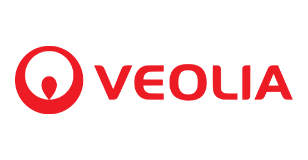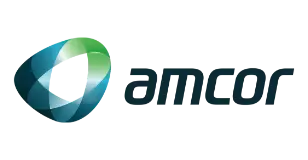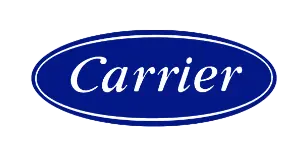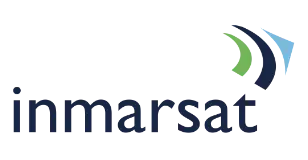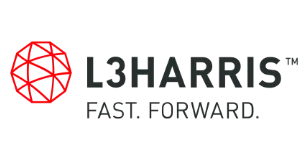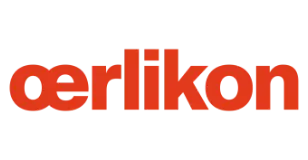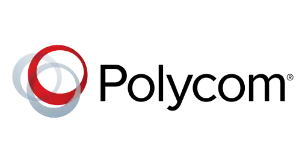
Asia-Pacific Anti-Aging Market Research Report: Forecast (2024-2030)
Asia-Pacific Anti-Aging Market Report - By Product (Anti-Wrinkle Products, Anti-Stretch Marks Products, Hair Color Products, UV Absorbers, Others (Dermal Fillers, Botox, etc.)), By... Services (Anti-Pigmentation Therapy, Adult Acne Therapy, Hair Restoration, Chemical Peel, Liposuction Services, Eye Lid Surgery, Abdominoplasty, Others (Sclerotherapy, Breast Augmentation, etc.)), By Devices (Anti-Cellulite Treatment Devices, Laser Aesthetic Devices, Radiofrequency Devices, Microderm Abrasion Devices) By Age Group (Generation Y (Age Group: 25-40 years), Generation X (Age Group: 41-56 years), Baby Boomers (Age Group: 57-75 years)), By Distribution Channel (Online, Direct Sales, Departmental/Retail Stores, Supermarkets/Hypermarkets), By End User (Hospitals, Clinics, Homecare) and Others Read more
- FMCG
- Apr 2024
- Pages 189
- Report Format: PDF, Excel, PPT
Market Definition
Aging is an inherent, progressive, natural phenomenon defined as a sequence of biochemical processes in the body. Anti-aging solutions reverse the aging process and aid in the early detection, prevention, and treatment of age-related problems.
Market Insights & Analysis: Asia-Pacific Anti-Aging Market (2024-30):
The Asia-Pacific Anti-Aging Market is estimated to grow at a CAGR of around 7.0% during the forecast period, i.e., 2024-30. The rising awareness and acceptance of anti-aging solutions and snowballing innovations in anti-aging products are the foremost factors that have propelled the market growth.
Asia-Pacific is experiencing growth in both the size and the proportion of the older population, thus is expected to drive the overall Asia-Pacific Anti-Aging Market. For instance, according to the United Nations, the number of older persons is projected to more than double, from 630 million in 2020 to about 1.3 billion by 2050. Although increasing longevity is a positive outcome of social, economic, and technological development, however with increasing age come several skin changes, including wrinkles & sagging skin, whitening or graying of the hair, etc.
| Report Coverage | Details |
|---|---|
| Study Period | Historical Data: 2019-22 |
| Base Year: 2023 | |
| Forecast Period: 2024-30 | |
| CAGR (2024-2030) | 7.0% |
| Country Covered | China, India, Japan, South Korea, Australia & New Zealand, Others |
| Key Companies Profiled | Coty Inc., PhotoMedex, Inc., Lumenis Ltd., Alma Lasers Ltd., Beiersdorf AG, Allergan Inc. (AbbVie), L'Oréal S.A., VLCC Health Care Limited, Shiseido Co., Ltd., The Procter & Gamble Company, The Himalaya Drug Company, and Others |
| Unit Denominations | USD Million/Billion |
The expanding elderly population witnessing such changes represents a large consumer base with specific skincare needs, like anti-wrinkle creams, moisturizers, serums, and other anti-aging solutions. Moreover, as this group tends to have greater purchasing power and a willingness to invest in personal care products, it creates a lucrative growth opportunity for companies operating in the Asia-Pacific Anti-Aging Market. Also, the increased demand has led to the development of innovative anti-aging solutions, such as those tailored to the needs & preferences of consumers. In addition, new product launches and innovative marketing strategies by market players are garnering consumers’ attention and extending the market acceleration.

Further, different environmental factors, such as air pollutants and ultraviolet (UV) light contribute to premature aging of the skin by accelerating wrinkles and age spots. Due to increased scientific research highlighting these risks and media coverage promoting awareness, individuals in Asia-Pacific are realizing the damaging effects of air pollution and UV radiation on the skin. This has led to the increased demand for anti-aging skincare solutions in the region and has propelled the overall Asia-Pacific Anti-Aging Market. The unhealthy eating habits in Asia-Pacific have also accelerated the range of skin problems, including premature aging of the skin, and have contributed to the growing demand for Anti-Aging solutions in the region.
Asia-Pacific Anti-Aging Market Driver:
Rising Awareness of Skincare Driven by Social Media – The increasing awareness of skincare driven by social media would propel the Asia-Pacific Anti-Aging Market. Social media and digital platforms play a significant role in spreading information about skincare routines, product recommendations, and professional treatments. The companies have also collaborated with actors, influencers, beauty bloggers, and skincare experts who leverage social media platforms to share skincare tips and promote anti-aging solutions, further raising awareness among consumers in the Asia-Pacific region. For example, in 2022, SK-II collaborated with a renowned South Korean actress with a strong social media following in Asia to endorse their anti-aging skincare products and appeal to a wider audience. As access to information and education about skincare improves, consumers are becoming more knowledgeable about common skin concerns such as wrinkles, fine lines, hyperpigmentation, and loss of elasticity. This heightened awareness leads to a growing demand for anti-aging products and treatments to address these issues effectively.
Asia-Pacific Anti-Aging Market Opportunity:
Rising Demand for Non-Invasive Anti-Aging Treatments & Procedures – The rising demand for non-invasive anti-aging treatments and procedures presents a significant opportunity for the Asia-Pacific Anti-Aging Market. With advancements in technology and a growing emphasis on personal well-being, consumers are increasingly seeking alternatives to surgical interventions for maintaining youthful skin.
Non-invasive treatments such as laser therapy, chemical peels, microdermabrasion, and injectables like dermal fillers and botulinum toxin are gaining popularity due to their effectiveness and minimal downtime. Hence, this presents an opportunity for skincare companies to offer a diverse range of non-invasive anti-aging solutions tailored to different skin types and concerns. By investing in research and development to improve the efficacy and safety of these treatments, companies can capitalize on the growing demand for non-surgical anti-aging options in the Asia Pacific region.
Asia-Pacific Anti-Aging Market Challenge:
Volatility in the Cost of Raw Materials & Expensive Natural Ingredients to Limit the Industry Growth – The increasing cost of raw materials and natural ingredients to make anti-wrinkle products, such as hyaluronic acids, could hinder market development. The products are majorly gaining popularity based on natural, organic, exotic fruit, plant, or other compounds as prime ingredients like Quillaja Saponaria, Acacia Concinna or Sapindus, and Jojoba, which are expensive natural ingredients, raising the prices of the products away from the budget of young consumers with limited disposable income.
Additionally, specific products whose production utilizes cutting-edge science and technology, such as synthetics, UV agents, fatty acids, SPF compounds, etc., are expensive since technology prices are also increasing. Thus, while the introduction & rollout of new products are expanding the market, the fluctuating high cost of products could hinder industrial expansion.
Asia-Pacific Anti-Aging Market Trend:
Growing Preference for Natural & Organic Skincare Products Formulated with Botanical Extracts, Vitamins, and Other Naturally-derived Ingredients – The growing preference for organic and natural skincare products is poised to propel the Asia-Pacific Anti-Aging Market. In recent times, consumers are increasingly prioritizing products that are perceived as safer and more environmentally friendly. Organic and natural skincare products are often associated with fewer chemicals and potential irritants, appealing to health-conscious consumers.
Also, there is a rising awareness of the potential long-term benefits of using natural ingredients for skincare, including reduced risk of adverse reactions and improved skin health. For example, NutriGlow’s Ubtan Facial Kit was launched in 2022, in India. The ubtan consists of turmeric and sandalwood, natural ingredients, known for restoring youthful radiance without causing adverse reactions. As a result, skincare brands incorporating organic and natural ingredients are likely to see increased traction in the Asia-Pacific Anti-Aging Market, reflecting evolving consumer preferences and driving growth.
Asia-Pacific Anti-Aging Market (2024-30): Segmentation Analysis
The Asia-Pacific Anti-Aging Market study by MarkNtel Advisors evaluates & highlights the major trends & influencing factors in each segment & includes predictions for the period 2024–2030 at the regional level. In accordance to the analysis, the market has been further classified as:
Based on Products
- Anti-Wrinkle Products
- Anti-Stretch Marks Products
- Hair Color Products
- UV Absorbers
- Others
The Anti-Wrinkle Products segment held a major share of the Asia-Pacific Anti-Aging Market. As wrinkles are seen as one of the earliest signs of aging, anti-wrinkle products ensure delay in the wrinkling process; it has prospered the adoption of anti-wrinkling products. Furthermore, the spreading trend of new and innovative skin care products has further popularized the implementation of anti-aging products at an early age, even before the formation of wrinkles, facilitating market accession.
Moreover, as the dullness and wrinkle formation are related to be caused by the lack of essential nutrients in the body, exposure to UV light, smoking, dehydration, drugs, and genetic predisposition, thus, the segment is further expanding as it poses a solution to aforementioned skin damage issues, fueling the industry growth.
Based on the Services
- Anti-Pigmentation Therapy
- Adult Acne Therapy
- Hair Restoration
- Chemical Peel
- Liposuction Services
- Eye Lid Surgery
- Abdominoplasty
- Others
The Hair Restoration segment is expected to dominate the Asia-Pacific Anti-Aging Market over the forecasting period. The growth is fueled by the escalating issue of hair loss among the population due to various factors, including climate change, inadequate nutrition, aging, health concerns, heightened stress levels, and water quality. This has led to a surge in the demand for hair transplant surgeries and preventative products, particularly among the youth, in combating hair loss challenges.
Moreover, with premature balding becoming increasingly prevalent among young men, hair restoration practices have gained widespread acceptance across Asia. Hence, this trend has driven the adoption of various treatments, such as follicular unit extraction (FUE) and follicular unit transplantation (FUT), bolstering the segment’s growth.
Asia-Pacific Anti-Aging Market (2024-30): Regional Projection
Geographically, the Asia-Pacific Anti-Aging Market expands across:
- China
- India
- Japan
- South Korea
- Australia & New Zealand
- Others
South Korea accounts for a significant share of the Asia-Pacific Anti-Aging Market. South Korea's dominance in the Asia Pacific Anti-Aging Market has been attributed to a cultural emphasis on skincare characterized by a strong emphasis on maintaining youthful skin, which drives demand for various anti-aging products.
The South Korea Anti-Aging Market further benefits from continuous innovation and research, resulting in the creation of highly effective anti-aging products. The country has also witnessed growth in anti-aging product demand due to its elderly population. For instance, as per the World Bank, about 5,114,539 females were aged 65 and over in South Korea in 2022. Similarly, around 3,915,805 men were aged 65 and over in 2022 in South Korea. With that, the regional market is predicted to witness prosperity in the following years.
Asia-Pacific Anti-Aging Industry Recent Development:
- 2023: Hy launched Leti 7714 Triple Lift-up Up Anti-Aging Cream, which features a fermented product of cultured lactic acid bacteria in South Korea.
- 2022: 7e Wellness launched a first-of-its-kind Microcurrent Device for Anti-Ageing Treatment in India.
Gain a Competitive Edge with Our Asia-Pacific Anti-Aging Market Report
- The Asia-Pacific Anti-Aging Market Report by MarkNtel Advisors provides a detailed & thorough analysis of market size, growth rate, competitive landscape, and key players. This comprehensive analysis helps businesses gain a holistic understanding of the market dynamics & make informed decisions.
- This report also highlights current market trends & future projections, allowing businesses to identify emerging opportunities & potential challenges. By understanding market forecasts, companies can align their strategies & stay ahead of the competition.
- The Asia-Pacific Anti-Aging Market Report aids in assessing & mitigating risks associated with entering or operating in the market. By understanding market dynamics, regulatory frameworks, and potential challenges, businesses can develop strategies to minimize risks & optimize their operations.
Frequently Asked Questions
- Market Definition
- Introduction
- Product Definition
- Research Process
- Assumptions
- Executive Summary
- Asia-Pacific Anti-Aging Market Regulations & Policy
- Asia-Pacific Anti-Aging Market Trends & Insights
- Asia-Pacific Anti-Aging Market Dynamics
- Drivers
- Challenges
- Asia-Pacific Anti-Aging Market Hotspots & Opportunities
- Asia-Pacific Anti-Aging Market Supply Chain Analysis
- Asia-Pacific Anti-Aging Market Consumer Behavior Analysis
- Consumer Trends & Preferences
- Factors Affecting Buying Decision
- Brand Preference
- Asia-Pacific Anti-Aging Market Outlook, 2019-2030F
- Market Size & Analysis
- By Revenues (USD Million)
- Market Share & Analysis
- By Product
- Anti-Wrinkle Products- Market Size & Forecast 2019-2030, USD Million
- Anti-Stretch Marks Products- Market Size & Forecast 2019-2030, USD Million
- Hair Color Products- Market Size & Forecast 2019-2030, USD Million
- UV Absorbers- Market Size & Forecast 2019-2030, USD Million
- Others (Dermal Fillers, Botox, etc.)- Market Size & Forecast 2019-2030, USD Million
- By Services
- Anti-Pigmentation Therapy- Market Size & Forecast 2019-2030, USD Million
- Adult Acne Therapy- Market Size & Forecast 2019-2030, USD Million
- Hair Restoration- Market Size & Forecast 2019-2030, USD Million
- Chemical Peel- Market Size & Forecast 2019-2030, USD Million
- Liposuction Services- Market Size & Forecast 2019-2030, USD Million
- Eye Lid Surgery- Market Size & Forecast 2019-2030, USD Million
- Abdominoplasty- Market Size & Forecast 2019-2030, USD Million
- Others (Sclerotherapy, Breast Augmentation, etc.) - Market Size & Forecast 2019-2030, USD Million
- By Devices
- Anti-Cellulite Treatment Devices- Market Size & Forecast 2019-2030, USD Million
- Laser Aesthetic Devices- Market Size & Forecast 2019-2030, USD Million
- Radiofrequency Devices- Market Size & Forecast 2019-2030, USD Million
- Microderm Abrasion Devices- Market Size & Forecast 2019-2030, USD Million
- By Age Group
- Generation Y (Age Group: 25-40 years)- Market Size & Forecast 2019-2030, USD Million
- Generation X (Age Group: 41-56 years)- Market Size & Forecast 2019-2030, USD Million
- Baby Boomers (Age Group: 57-75 years)- Market Size & Forecast 2019-2030, USD Million
- By Distribution Channel
- Online- Market Size & Forecast 2019-2030, USD Million
- Direct Sales- Market Size & Forecast 2019-2030, USD Million
- Departmental/Retail Stores- Market Size & Forecast 2019-2030, USD Million
- Supermarkets/Hypermarkets- Market Size & Forecast 2019-2030, USD Million
- By End User
- Hospitals- Market Size & Forecast 2019-2030, USD Million
- Clinics- Market Size & Forecast 2019-2030, USD Million
- Homecare- Market Size & Forecast 2019-2030, USD Million
- By Country
- China
- India
- Japan
- South Korea
- Australia & New Zealand
- Others
- By Competitors
- Competition Characteristics
- Market Share & Analysis
- By Product
- China Anti-Aging Market Outlook, 2019-2030F
- Market Size & Analysis
- By Revenues (USD Million)
- Market Share & Analysis
- By Products- Market Size & Forecast 2019-2030, USD Million
- By Services- Market Size & Forecast 2019-2030, USD Million
- By Devices- Market Size & Forecast 2019-2030, USD Million
- By Age Group- Market Size & Forecast 2019-2030, USD Million
- By Distribution Channel- Market Size & Forecast 2019-2030, USD Million
- By End User- Market Size & Forecast 2019-2030, USD Million
- Market Size & Analysis
- India Anti-Aging Market Outlook, 2019-2030F
- Market Size & Analysis
- By Revenues (USD Million)
- Market Share & Analysis
- By Products- Market Size & Forecast 2019-2030, USD Million
- By Services- Market Size & Forecast 2019-2030, USD Million
- By Devices- Market Size & Forecast 2019-2030, USD Million
- By Age Group- Market Size & Forecast 2019-2030, USD Million
- By Distribution Channel- Market Size & Forecast 2019-2030, USD Million
- By End User- Market Size & Forecast 2019-2030, USD Million
- Market Size & Analysis
- Japan Anti-Aging Market Outlook, 2019-2030F
- Market Size & Analysis
- By Revenues (USD Million)
- Market Share & Analysis
- By Products- Market Size & Forecast 2019-2030, USD Million
- By Services- Market Size & Forecast 2019-2030, USD Million
- By Devices- Market Size & Forecast 2019-2030, USD Million
- By Age Group- Market Size & Forecast 2019-2030, USD Million
- By Distribution Channel- Market Size & Forecast 2019-2030, USD Million
- By End User- Market Size & Forecast 2019-2030, USD Million
- Market Size & Analysis
- South Korea Anti-Aging Market Outlook, 2019-2030F
- Market Size & Analysis
- By Revenues (USD Million)
- Market Share & Analysis
- By Products- Market Size & Forecast 2019-2030, USD Million
- By Services- Market Size & Forecast 2019-2030, USD Million
- By Devices- Market Size & Forecast 2019-2030, USD Million
- By Age Group- Market Size & Forecast 2019-2030, USD Million
- By Distribution Channel- Market Size & Forecast 2019-2030, USD Million
- By End User- Market Size & Forecast 2019-2030, USD Million
- Market Size & Analysis
- Australia & New Zealand Anti-Aging Market Outlook, 2019-2030F
- Market Size & Analysis
- By Revenues (USD Million)
- Market Share & Analysis
- By Products- Market Size & Forecast 2019-2030, USD Million
- By Services- Market Size & Forecast 2019-2030, USD Million
- By Devices- Market Size & Forecast 2019-2030, USD Million
- By Age Group- Market Size & Forecast 2019-2030, USD Million
- By Distribution Channel- Market Size & Forecast 2019-2030, USD Million
- By End User- Market Size & Forecast 2019-2030, USD Million
- Market Size & Analysis
- Market Size & Analysis
- Asia-Pacific Anti-Aging Market Key Strategic Imperatives for Success & Growth
- Competition Outlook
- Company Profiles
- Coty Inc.
- Business Description
- Product Portfolio
- Strategic Alliances or Partnerships
- Recent Developments
- Financial Details
- Others
- PhotoMedex, Inc.
- Business Description
- Product Portfolio
- Strategic Alliances or Partnerships
- Recent Developments
- Financial Details
- Others
- Lumenis Ltd
- Business Description
- Product Portfolio
- Strategic Alliances or Partnerships
- Recent Developments
- Financial Details
- Others
- Alma Lasers Ltd
- Business Description
- Product Portfolio
- Strategic Alliances or Partnerships
- Recent Developments
- Financial Details
- Others
- Beiersdorf AG
- Business Description
- Product Portfolio
- Strategic Alliances or Partnerships
- Recent Developments
- Financial Details
- Others
- Allergan Inc. (AbbVie)
- Business Description
- Product Portfolio
- Strategic Alliances or Partnerships
- Recent Developments
- Financial Details
- Others
- L'Oréal S.A.
- Business Description
- Product Portfolio
- Strategic Alliances or Partnerships
- Recent Developments
- Financial Details
- Others
- VLCC Health Care Limited
- Business Description
- Product Portfolio
- Strategic Alliances or Partnerships
- Recent Developments
- Financial Details
- Others
- Shiseido Co., Ltd
- Business Description
- Product Portfolio
- Strategic Alliances or Partnerships
- Recent Developments
- Financial Details
- Others
- The Procter & Gamble Company
- Business Description
- Product Portfolio
- Strategic Alliances or Partnerships
- Recent Developments
- Financial Details
- Others
- The Himalaya Drug Company
- Business Description
- Product Portfolio
- Strategic Alliances or Partnerships
- Recent Developments
- Financial Details
- Others
- Others
- Coty Inc.
- Company Profiles
- Disclaimer
MarkNtel Advisors follows a robust and iterative research methodology designed to ensure maximum accuracy and minimize deviation in market estimates and forecasts. Our approach combines both bottom-up and top-down techniques to effectively segment and quantify various aspects of the market. A consistent feature across all our research reports is data triangulation, which examines the market from three distinct perspectives to validate findings. Key components of our research process include:
1. Scope & Research Design At the outset, MarkNtel Advisors define the research objectives and formulate pertinent questions. This phase involves determining the type of research—qualitative or quantitative—and designing a methodology that outlines data collection methods, target demographics, and analytical tools. They also establish timelines and budgets to ensure the research aligns with client goals.
2. Sample Selection and Data Collection In this stage, the firm identifies the target audience and determines the appropriate sample size to ensure representativeness. They employ various sampling methods, such as random or stratified sampling, based on the research objectives. Data collection is carried out using tools like surveys, interviews, and observations, ensuring the gathered data is reliable and relevant.
3. Data Analysis and Validation Once data is collected, MarkNtel Advisors undertake a rigorous analysis process. This includes cleaning the data to remove inconsistencies, employing statistical software for quantitative analysis, and thematic analysis for qualitative data. Validation steps are taken to ensure the accuracy and reliability of the findings, minimizing biases and errors.
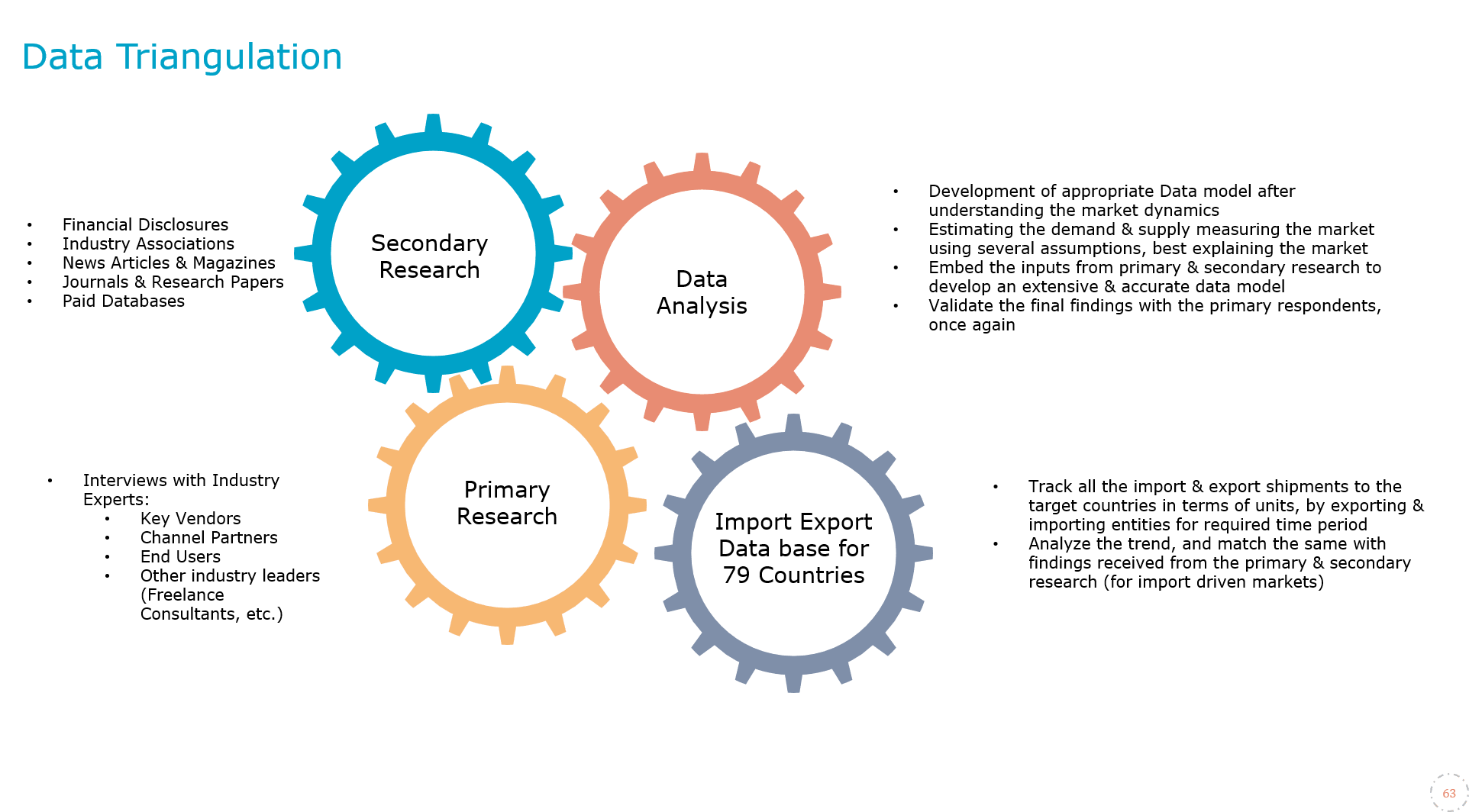
4. Data Forecast and FinalizationThe final phase involves forecasting future market trends based on the analyzed data. MarkNtel Advisors utilize predictive modeling and time series analysis to anticipate market behaviors. The insights are then compiled into comprehensive reports, featuring visual aids like charts and graphs, and include strategic recommendations to inform client decision-making

